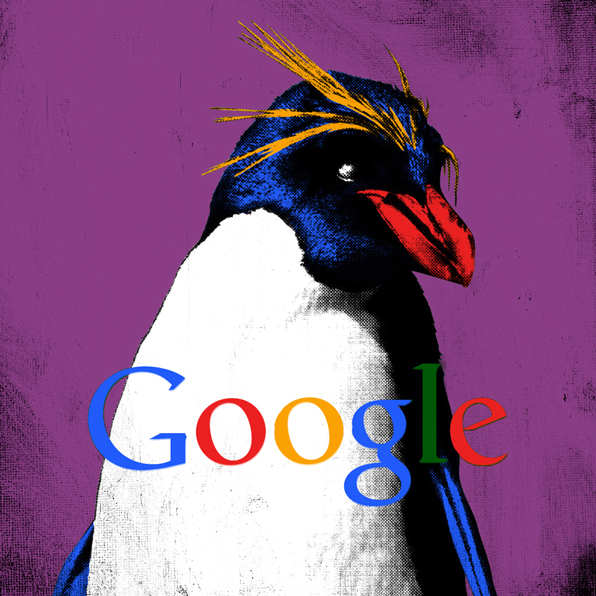In keeping with its animal theme, Google announced a major update with a fierce attack that has hurt thousands of blogs, websites, and online businesses. If you have yet to hear of Google Penguin, you are likely new to the online arena or living under a rock, but it is one of Google’s most important algorithmic updates to date.

Google Penguin essentially fights web spam, such as cloaking, link schemes, and keyword stuffing. Anyone who uses any of these black-hat SEO techniques will pay dearly during Google’s continued feud with black-hat SEO tricksters.
In fact, Google launches a significant update every few months or so to combat against a growing amount of web spam, which have a tremendous impact on SERPS. Penguin is simply part of a constant, on-going effort by Google to punish unethical online marketers and reward webmasters and marketers who practice high-quality SEO tactics.
Since its release, Google’s Penguin has been working behind the scenes, examining and identifying websites with a multitude of manipulative links. One and a half years after its release, Penguin seems to be stretching its wings and gaining full steam as it continues to affect thousands of sites across the Web.
Let’s delve into the history of the Penguin update and each of its releases to better understand one of Google’s most significant updates, helping you steer clear from its nasty bite.
Penguin 1.0 – April 24, 2012
Penguin 1.0 was Google’s first Penguin update to its evolving algorithm, and the company announced that the Penguin update was targeted at punishing the rankings of websites the search giant deemed to have violated its quality guidelines.
The update was specifically released to combat web spam, which is much more abusive than over-optimization. According to Matt Cutts, the head of Google’s anti-web spam team, “I believe over-optimization is not the right description, because it makes the distinction between web spam and white-hat SEO techniques unclear. Penguin is specifically targeted at web spam and not SEO.”
As the first Penguin update was rolled out live, it had an immediate impact on 3.1 percent of English search queries and three percent of queries in Arabic, Chinese, and German. With the primary goal of targeting web spam, Penguin severely punished hordes of spam or low-quality sites.
Penguin 1.1 – May 25, 2012
A little more than one month after the first Penguin release, Google announced a second update on May 26, 2012. In fact, Cutts revealed the new rollout of Penguin’s algorithmic data refresh via Twitter.
Since it was only a data refresh and not a full-fledged algorithmic update, Cutts added that Penguin 1.1 would not impact any more than 0.1 percent of English searches.
Although numerous SEO experts and webmasters believed Google had already unleashed several Penguin updates, Cutts contended that Penguin 1.1 was the first update since the original Penguin rollout on April 24, 2012.
After Penguin 1.1 was launched, webmaster communities were abuzz with stories of devastating drops in traffic and traffic recoveries. However, numerous others who used white-hat SEO techniques and had sites with quality content reported that they witnessed little or no change at all to the Google rankings of their sites.
Penguin #3 – October 5, 2012
Similar to Panda, Google decided to reboot the numbering of the Penguin update with this release. According to Cutts, who also tweeted about this rollout, this third installment in the Penguin update series was also a simple data refresh. He continued by mentioning that the update would only affect 0.3 percent of all English search queries, making it only slightly more significant than Penguin 1.1.
After the launch of Penguin #3, a multitude of webmasters reported that many of their sites had recovered from prior lost rankings. Many SEO specialists reported noticing no substantial changes in the SERPs of their client’s websites after checking their rankings through keyword analysis.
However, after the update, a large number of webmasters and SEO specialists began paying much more attention to the process of improving their site’s backlink profiles, trying to make the linking structures seem as natural as possible.
Penguin 2.0 – May 22, 2013
Google released its fourth Penguin update on May 22nd. Rather than a data refresh, this algorithmic update contained a twist that was not present in any of the previous Penguin updates.
On his blog, Cutts explained that this update was the “next generation” of the anti-web spam Penguin algorithm, and he also stated that the rollout was now complete. In total, 2.3 percent of regular users noticed that their sites were affected to a certain degree. The update was also rolled out in search queries in other languages around the world.
According to Google, brand new technology was used in Penguin 2.0, making it an innovative and critical step in its continued efforts to fight spam. Google also made it very clear that it was a major change to the Penguin algorithm and not a mere data refresh.
Fortunately for quality sites, Google announced that quality sites in specific communities and industries would receive a boost in their search engine authority. Conversely, numerous niche sites with low-quality backlink profiles or shady linking structures have seen their keyword rankings negatively impacted.
Penguin 2.1 – October 4, 2013
After going nearly five months without a Penguin update, Google rolled out the most recent Penguin update on October 4, 2013. Dubbed as Penguin 2.1, the recent update was more than likely a data refresh and not a significant alteration to the Penguin algorithm. However, the overall impact of 2.1 seems to have been rather moderate, and some webmasters have even reported that some of their sites have taken a significant hit.
Thus far, these are the only Penguin updates that have been released. However, with a new 2.1 designation and an ongoing determination to weed out spam and black-hat marketing tactics in an effort to remain the world’s leading search provider, Google will undoubtedly make many more Penguin updates in the near future. So, website owners must be diligent and focus on quality content and backlinks in order to thrive in the increasingly competitive digital marketplace.
Penguin 3.0 – October 17, 2014
Over a year since the last update, the Penguin 3.0 was rather small in scale, impacting less than 1% of US/English queries.
Penguin Shift to Rolling Updates – Dec 10, 2014
Penguin 4.0 – September 27, 2017
After years, a significant penguin rolled out and SERP flux lasted through the beginning of October.

